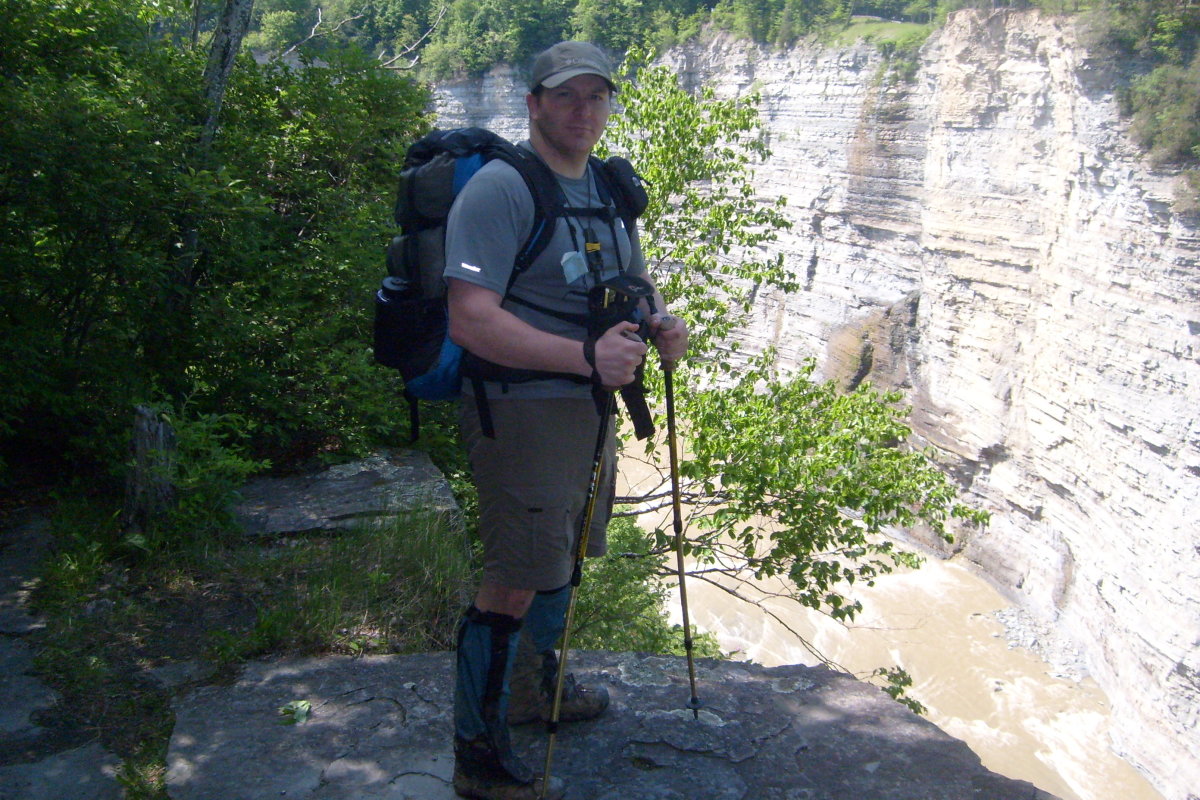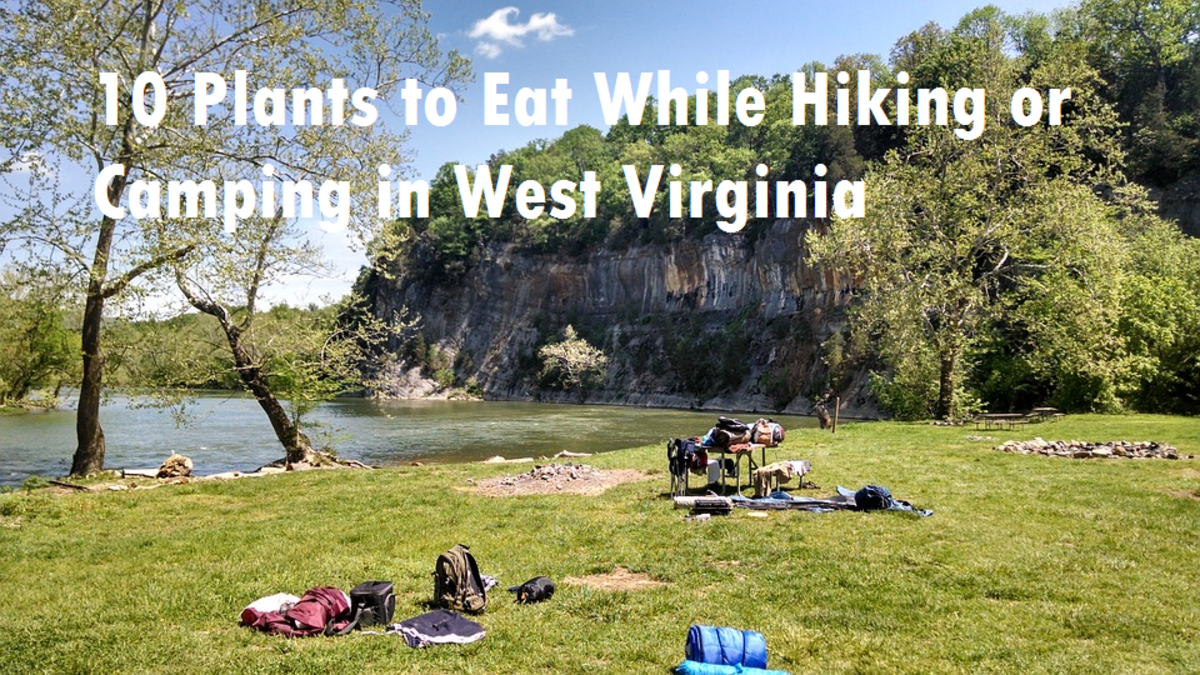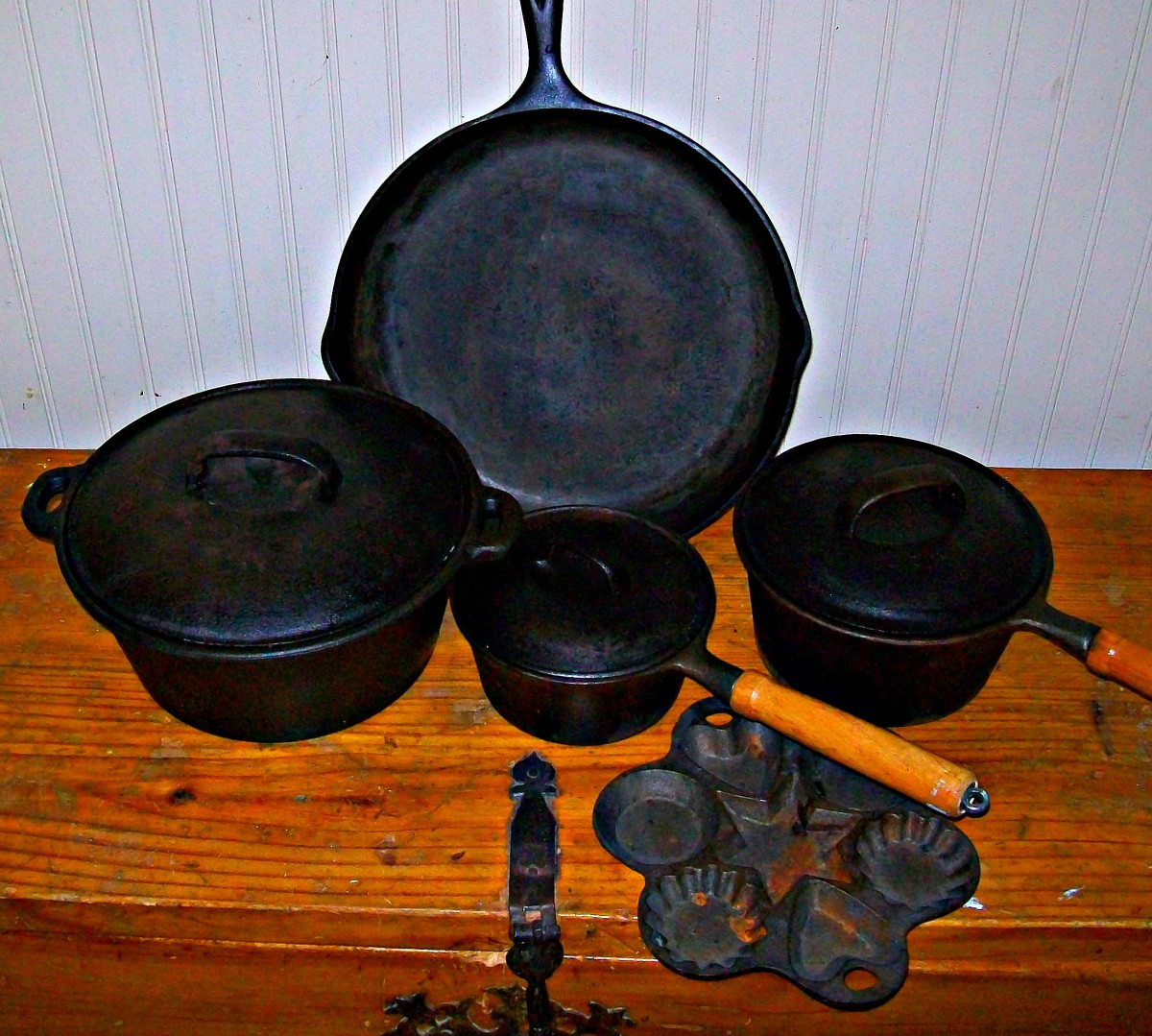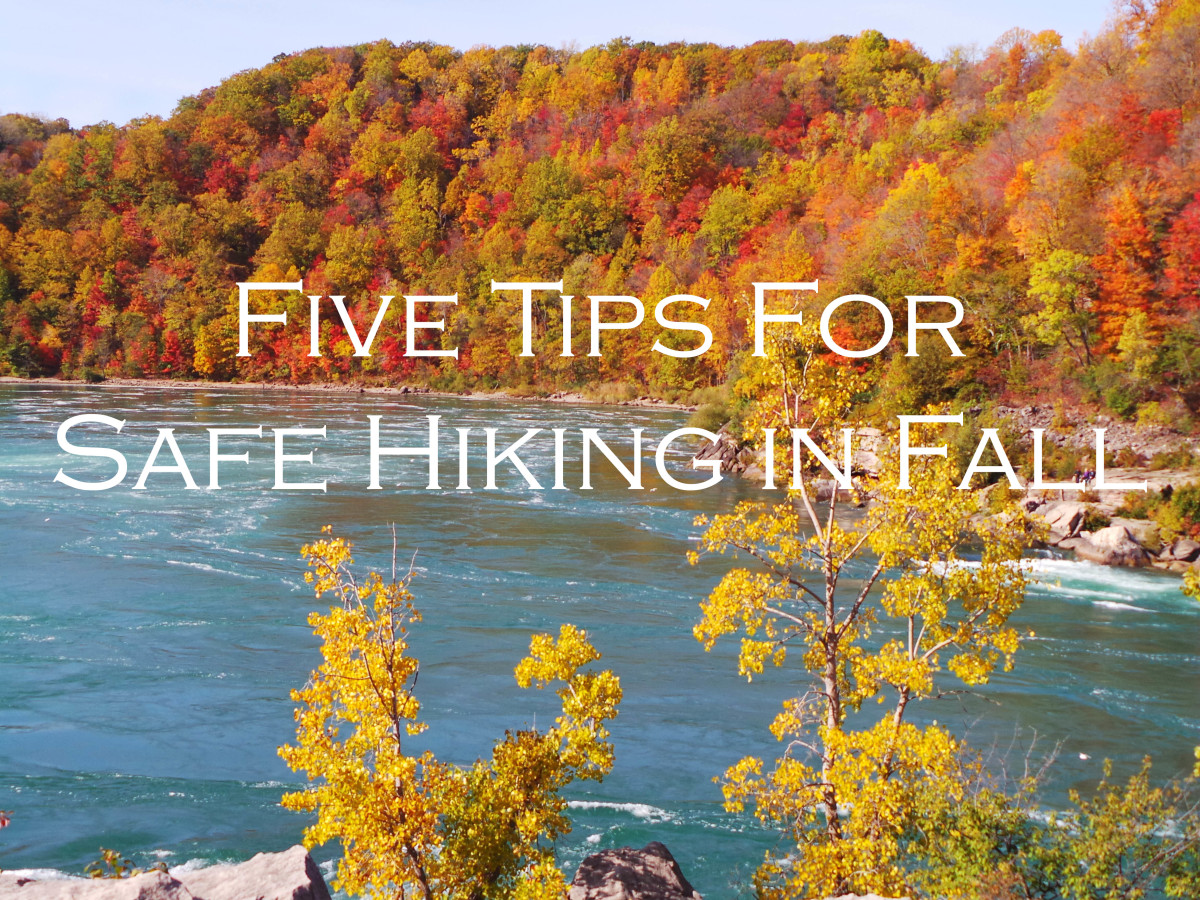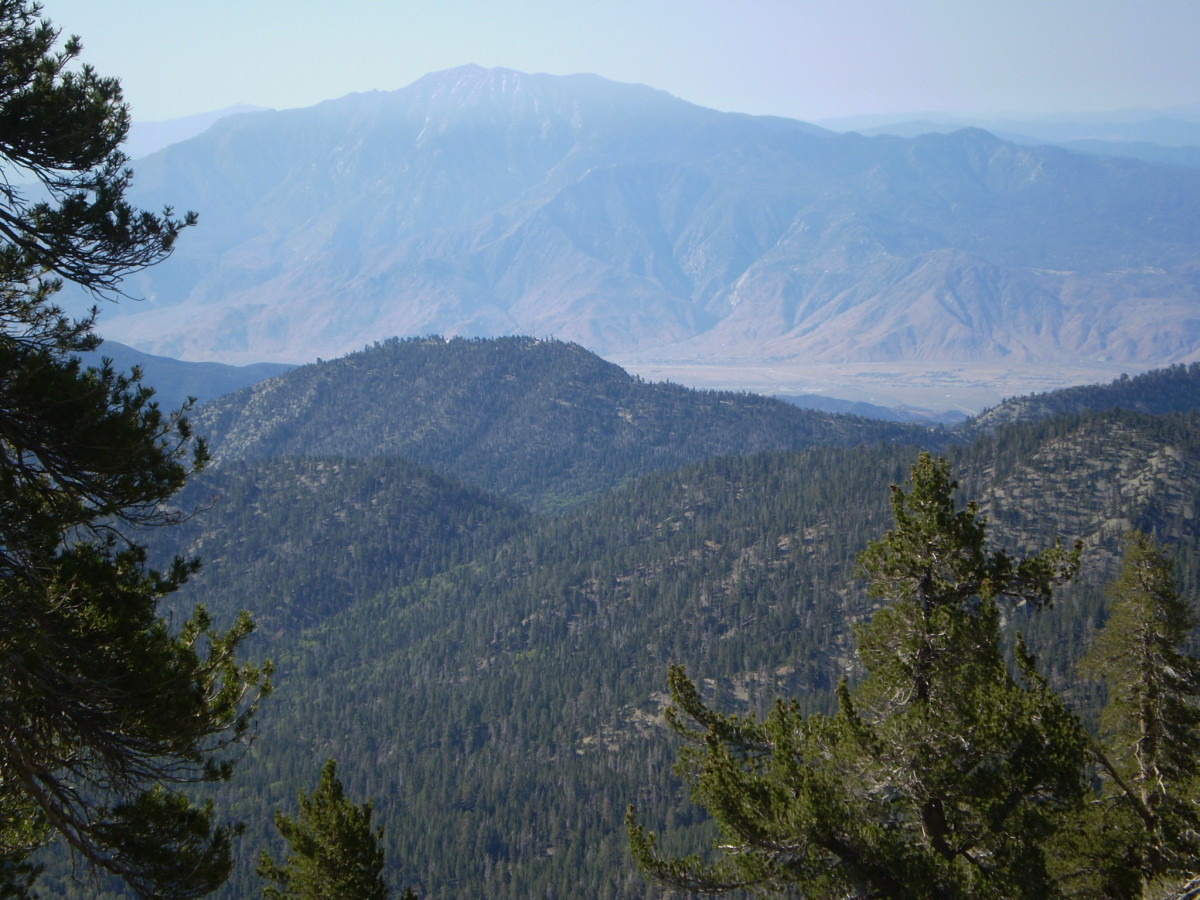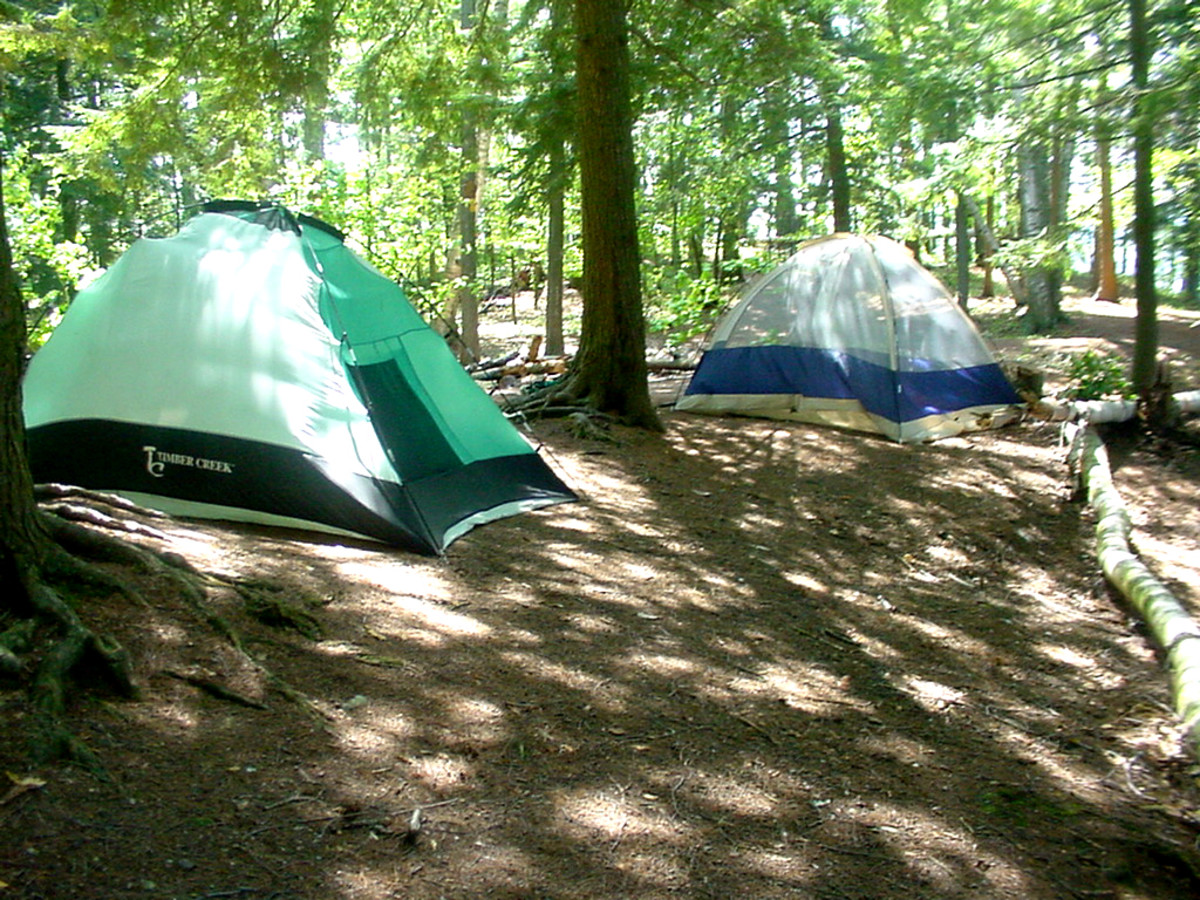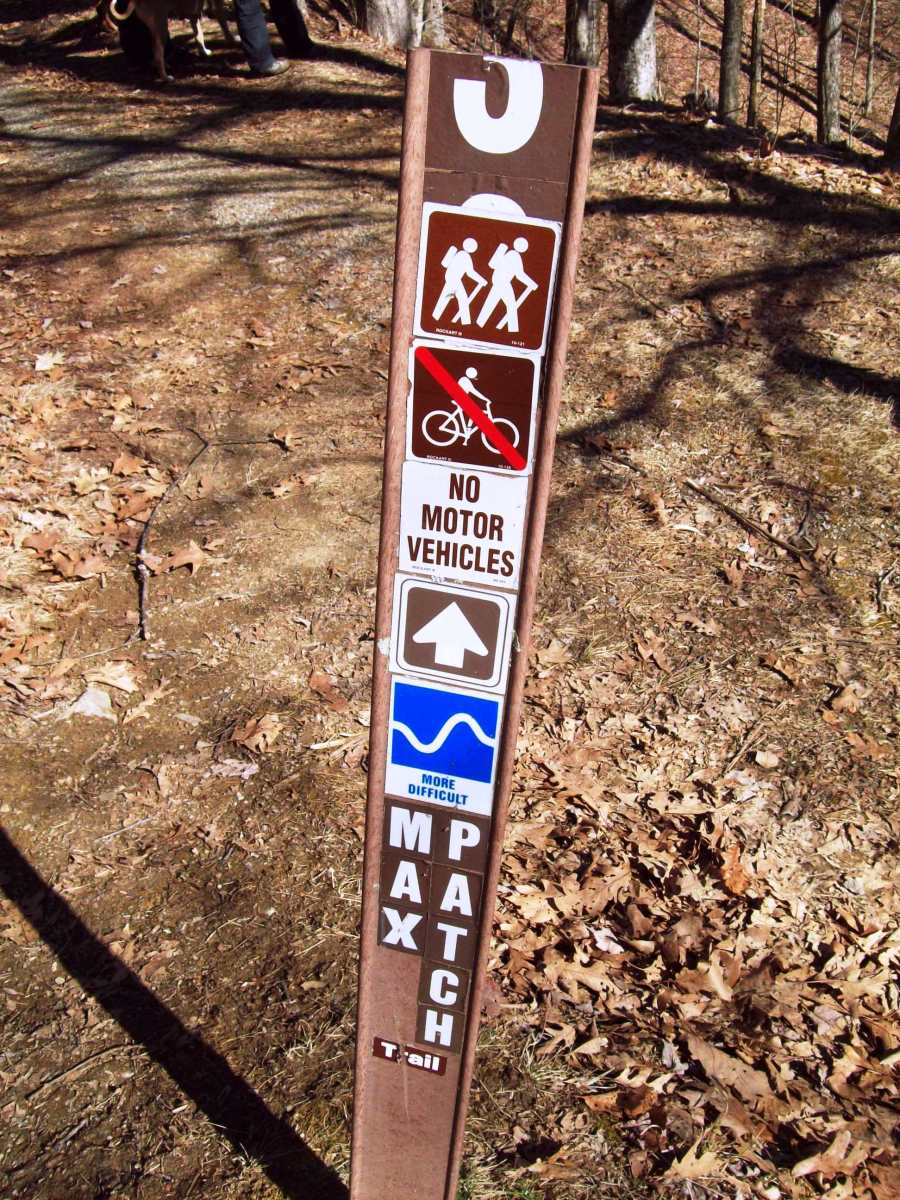How to Save Money on Camping and Hiking Equipment
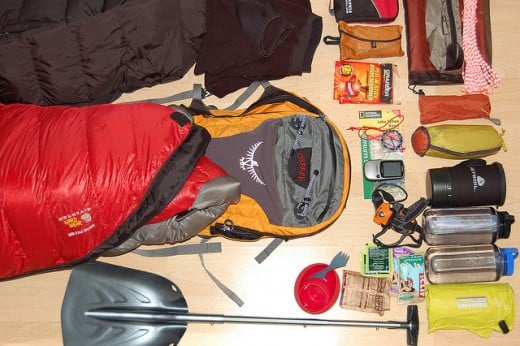
You feel excited, but don’t know why at first. The lure of the outdoor season calls to you while you fritter away the bulk of your existence at your desk job. You grow anxious and distracted. You yearn to get out there on the trip you’ve been planning in your head since the end of the last season. Jarred back into grim reality by a phone call from that obnoxious co-worker who can never remember how to do anything, you fume about being trapped at your desk.
“I still have 3 hours until I get to go home,” you fret to yourself. You succumb yet again to daydreams about your next adventure until your next phone call, but this time, it is from your spouse telling you that the kids will be away at grandma and grandpa’s for the weekend, and that the two of you should plan something. Your mind races. The possibilities are LIMITLESS! Then reality hits: that old backpack won’t last another trip, let alone another season, and the soles are worn and peeling off those old hiking boots. “no problem,” you muse, “I’ll just go to XYZ website and order what I need.” Sure enough, all the gear you need is readily available, complete with reviews and customer ratings. Caution: you’re about to get stroked, or stroke yourself, however you want to view it.
What happens to a lot of people is we give in to the excitement and buy what we don’t need, and at a time when the prices are at their highest. What the poor working slob described above should have done is buy in the off season if there really isn’t anything that can be done about the existing well-worn gear.
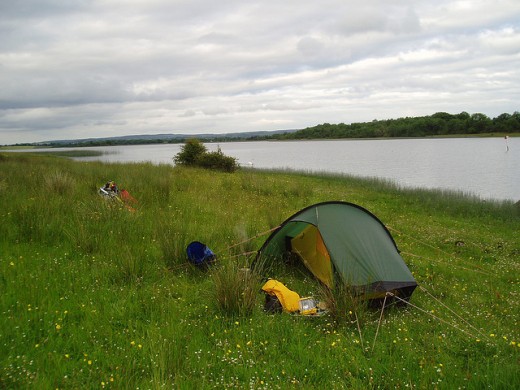
Camping and Hiking Equipment Assessment
How bad is it really? Can it be repaired? Would something new really outperform what you already have if you could repair what you have to nearly new condition? Is it worth the risk to use repaired gear for activities that involve some risk of physical injury? All good questions. The answers depend on the extent of the damage or wear to the gear. Certainly you can patch a small hole in a tent, and you can get your boots re-soled so you don’t need to break in a new pair, but when the damage is too significant, you run the risk of the repair failing. Also, if you have multiple problems with the same piece of gear, the effort and cost involved may rival that of buying replacement gear. Let’s think about the boots that I keep mentioning. These boots have been your travel companions for many a long mile, over ice and snow, boot-shredding pumice boulders and scree, and a few sojourns on coastal trails. The Soles are worn and peeling off, the lace eyelets are rusted, they are almost certainly no longer water proof and the insole is wasted. Can anything be done? You’d hate to break in a new pair of heavy leather boots, and you’d hate paying for a new pair even more (if you’re like me). Well, for the sole repair/replacement alone, you’re looking at $65 - $100, and if you need repair to Gore-Tex uppers, or new eyelets, add at least another $25 or so. Your insole replacement will cost from $10 - $45. New boots will run you from around $90 - $300, regular price.
You can see from that example that there is a limit to which a repair is a cost-effective way to go before it becomes a waste of money (and the time the boots are away being repaired). Have fun shopping!
Tents, backpacking sleeping bags and backpacks can be repaired at specialty fabric repair outfits that may be local to you, and these repairs are VERY cost-effective, and certainly the way to go, unless you want to buy a repair kit and do it yourself to save a few bucks. I personally would repair a small tear myself, but anything more extensive, or repairs involving tent mesh or zippers I would leave to the pros. Again, if the damage is too extensive, then you may end up buying a new piece of gear for less.
Mountaineering and Climbing Gear
For those worn crampons, ice tools and other climbing gear, replace them. I would NOT recommend anything that would compromise safety. Attempting to sharpen dull points may result in weakening them, if done incorrectly, and may cause them to break. The same goes for buying used gear in this category. Don’t.
Timing is Everything
It’s the end of the backpacking season, and you have resolved to take the aforementioned beloved pair of boots to be repaired. The guy at the shop is a straight-shooter, and after examining your boots says, “Have fun shopping!” Dejected, you depart with your faithful companions. Could a new pair of boots live up to the high standard set by your now defunct boots? The good news is that since the time that your boots were manufactured, fancy motorized wagons called cars have been invented, and many technological advances have been made in the boot world. The second bit of good news is that your timing couldn’t be better. End of season sales abound, and many manufacturers are informing retailers that certain products will not be produced any more. One nice thing about backcountry gear is that wearing last year’s styles still looks cool, or maybe I just don’t notice the backcountry fashionistas snickering at me and my styles from previous seasons. The same is true for almost everything you could want. Sometimes a little patience pays off too. In the offseason, not everything goes on sale at once, and retailers will offer multiple sale events with different gear highlighted at each sale, unless they are really trying to get rid of something, and sale prices can be found in between sales for those.
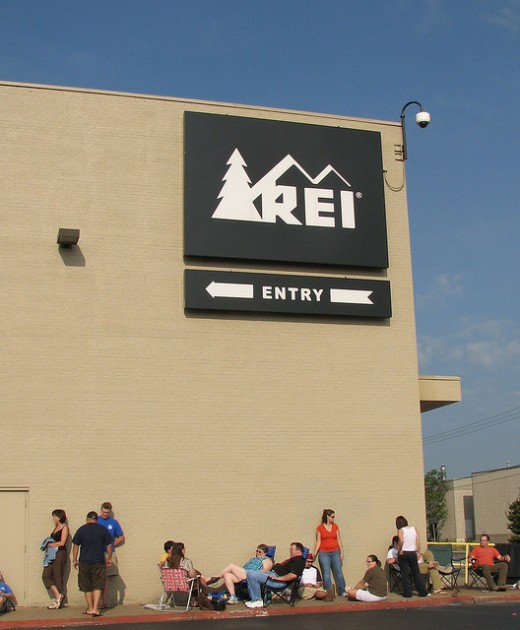
Used Camping and Hiking Equipment
Almost everyone I know has heard my glorious story of how I acquired my waterproof jacket with breathable fabric, normally retailing at $180. Actually, there really isn’t much of a story other than I bought it used for $39.95 at the REI Used Gear Sale. For those fortunate enough to have one of these stores around, you have access to periodic sales of equipment returned to REI for various reasons (or none at all as allowed by REI’s generous satisfaction guarantee policy). Prices are ridiculously good, and many people camp out in order to be first in line. Rental equipment is also sold at low prices, but again, beware of any used climbing gear.
Do I really need all this crap?
Camping and hiking equipment is quite a big business. There seems to be a lightweight solution for every potential issue you might run into that might cause you a little discomfort. Whenever I find a new gadget, I am, naturally, immediately drawn to it, eyes wide like a kid at a candy shop. Then the debate begins in my mind: “Ooo, this could solve this problem that I’ve always had with this other thing, but it’s REALLY expensive.” Soon I relegate the decision-making process to my old bottom line: “What’s the worst that could happen if I don’t have this?” Most of the time the answer is “nothing,” which translates into, “I’m out $x.xx!”
Titanium cookware or Aluminum Cookware?
Man that stuff is light and strong, so it must be perfect for backpacking, right? Well it is light and strong, but it carries a hefty price tag, and it doesn’t distribute heat from your stove very well. Heat transfer is ok, but the metal does not conduct the heat around the whole pot as well as other metals like steel or aluminum. Therefore, you can get a nice set of aluminum cookware for much less, and it’s still light and strong.
Trekking poles
Back when I was a young lass, I used to slog through the backcountry with a WOODEN STICK. Trekking poles in their current manifestation did not exist. I got along fine without them, that is, until I hurt my knee. But then I had my custom-cut walking stick to support my hurt knee. Since then, I have always carried something like that when I backpack. I would recommend them for people who are carrying heavy loads, people with hurt knees or people traveling over especially rough terrain, or along trails with numerous stream crossings. I only recommend getting one, although I have only seen them sold as a pair. Now that seems stupid to me. I only want one, and I have to buy two. The one way you can help yourself feel better about this now that I have ruined them for you by making you think about the waste involved is to BUY THEM USED. Then if you only use one, you can do so with the satisfaction of knowing you only paid for one. Something else to think about is you could simply buy a cheap set of ski poles, and that would run you far less than the trekking poles will (unless you buy them used). The only downside to that is the ski poles do not do that telescoping thing, and collapse into a nice, compact size that can be easily attached to you pack when you don’t want to use it.
Water treatment
Nothing like having one of your most vivid memories of your trip into the backcountry be amoebic dysentery. There are few situations where purifying your drinking and cooking water is a bad idea. I don’t even think about it. No matter how high up I am, or how sure I am of the purity of the source of the water, I kill whatever might be living in it. There are many fine solutions for doing this, from boiling it to chemically treating it to filtering it to irradiating it with a UV light emitting pen. Which do you think is the most effective method? Yep, you guessed it, the cave man method of boiling it. Which is the least expensive? Right again, boiling. If you feel you must use another method, the next least expensive method is chemical treatment. I use Iodine tablets to kill the bugs, followed 30 minutes later by chemical neutralization of the horrible tasting iodine, which takes another several minutes to work. I’ve used this method for years without any problems, it costs far less than any other method besides boiling, and it is the lightest and most compact.
Fire starters
One of my favorite things about camping is the campfire. It’s very relaxing, comforting, keeps the bugs away and it is a source of warmth and light. AND you can roast marshmallows. Many of us have had experience starting fires in less than ideal circumstances, such as in high wind or with wet wood. Under those circumstances I have in the past used stove fuel to get things going, but have since changed to a less explosive method, which I call fireballs. You probably have what you need to make these around you house: vaseline, cotton balls and aluminum foil. Swab the cotton ball liberally with Vaseline and wrap it in foil, leaving some of the cotton ball sticking out for a wick. These will burn like a candle for several minutes. This works well in moderate wind and/or with damp wood.
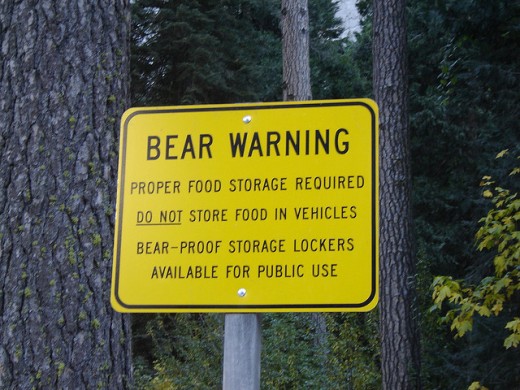
Bear (and other varmint) Protection
Have you ever worried about bears sniffing around your camp looking for food? Have you ever encountered a bear in the wilderness? I have, and I didn’t like it. You might wonder what the best deterrent is, and my answer would be to avoid making your campsite a feast for them (or other little critters that scurry). I can understand being motivated to protect yourself at all costs if your outdoor plans take you into bear country, but don’t be sucked into the bear-proof container idea. You’ll spend a lot for nothing, and some bears have learned how to get them open. If you do the following things, you’ll greatly reduce your chances of an encounter. Take precautions when preparing and cleaning up after meals not to leave ANY traces of food outside of cookware at your campsite, and preferably prepare meals at a location 100+ yards away from your campsite. Clean your cookware completely 100+ yards away from your camp. When checking out for the night, place all your food, and any food-related trash you are carrying in a plastic bag, and place that bag in your sleeping bag stuff sack. Tie one end of a 100’ nylon cord to the stuff sack, and tie the other end of the cord to something you could conceivably toss over a branch of a tree. Find a tree 100 yards or more away from your campsite. Toss the toss-able object over the branch of a tree that is at least 25-30 feet from the ground and hoist the food sack up. Allow the sack to hang no less than 15 feet above the ground, and not too close to the trunk of the tree. Tie the end of the cord to another branch or the trunk of the tree to secure it. If you have rain, place a plastic garbage bag over the stuff sack and thread the cord through a small hole in the bag prior to hanging it, or you could use a rain poncho. You just saved yourself $60+ using what you already have.
Conclusion
With a little thought and patience, you can enjoy your backcountry experiences without spending thousands of dollars. You may find that when put to the task, you can puzzle out solutions to ways of making your experience more enjoyable. I have provided only a few examples of how this can be done. Try a trip without all the fancy stuff and see what you would have wanted to make life easier. It’s often possible to engineer inexpensive workarounds for products that sell for a considerable sum of money. Have fun out there!

